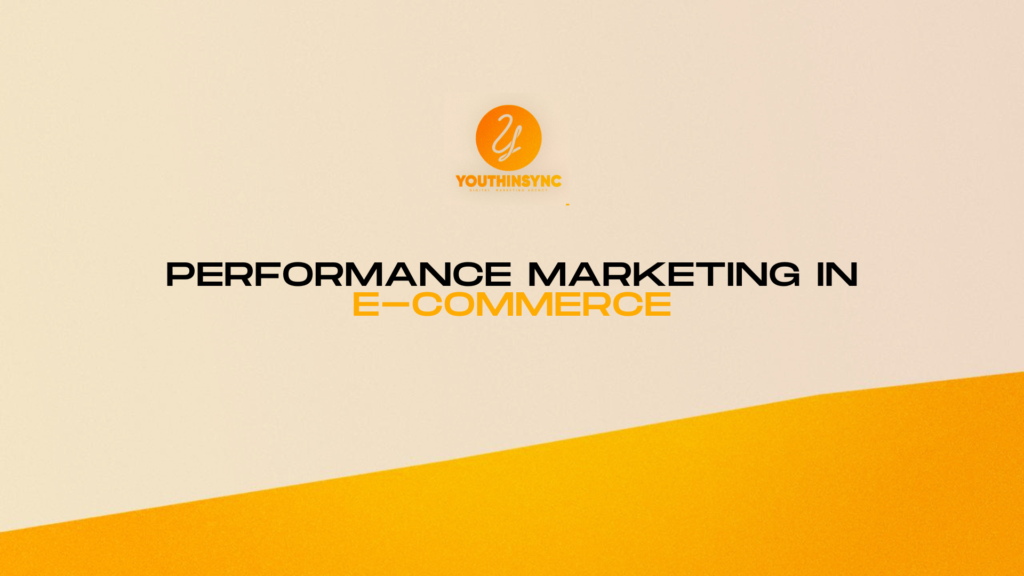Introduction to Performance Marketing in E-commerce
In today’s fast-paced digital landscape, e-commerce businesses must adopt strategies that guarantee tangible results. Performance marketing has emerged as a crucial approach for e-commerce businesses aiming to optimize their marketing investments by focusing on measurable outcomes. Unlike traditional marketing, which often involves guesswork and hefty costs, performance marketing allows businesses to pay only for specific actions such as clicks, sales, or leads. In this comprehensive guide, we’ll explore the key elements of performance marketing in e-commerce, including essential metrics, strategies, channels, and best practices.
What is Performance Marketing?
Performance marketing is a results-driven approach where businesses pay based on how their ads perform. Rather than paying upfront, e-commerce brands can control their spending by tracking conversions like clicks, sign-ups, or purchases. This model ensures that businesses only invest in what drives actual outcomes.
Key Metrics in E-commerce Performance Marketing
Monitoring the right metrics is essential for measuring and optimizing performance marketing campaigns. Here are some key performance indicators (KPIs) for e-commerce:
- Cost Per Click (CPC): The amount paid for each click on an ad. Lowering CPC while maintaining quality traffic is crucial.
- Cost Per Acquisition (CPA): The cost associated with acquiring a new customer. A lower CPA indicates a more efficient campaign.
- Return on Ad Spend (ROAS): Measures the revenue generated for every dollar spent on advertising. A high ROAS indicates a successful campaign.
- Click-Through Rate (CTR): The percentage of people who click on an ad after seeing it. A high CTR suggests your ad is relevant and engaging.
By keeping track of these metrics, businesses can make data-driven decisions to optimize their performance marketing efforts.
Benefits of Performance Marketing for E-commerce Businesses
Performance marketing offers numerous advantages that make it ideal for e-commerce:
- Targeted Reach: Performance marketing enables precise targeting based on demographics, interests, and behavior, ensuring your message reaches the right audience.
- Budget Efficiency: You only pay for the actions that matter, making it a cost-effective marketing strategy.
- Measurable Results: Detailed analytics allow businesses to track the performance of every campaign and optimize for better outcomes.
These benefits make performance marketing an essential strategy for e-commerce businesses looking to maximize ROI and scale their operations effectively.
How Performance Marketing Drives Sales and ROI
Performance marketing focuses on measurable outcomes, directly linking marketing efforts to sales and revenue. By leveraging strategies like PPC advertising, social media marketing, and affiliate partnerships, businesses can target potential customers who are more likely to convert. The ability to track every action allows businesses to continuously refine their approach, improving ROI over time.
For example, a targeted Google Ads campaign can drive high-intent traffic to your website, while a well-planned social media ad can increase brand visibility and engagement. Together, these strategies contribute to both immediate sales and long-term growth.
Comparing Performance Marketing to Traditional Marketing
Traditional marketing methods, like TV ads or print media, involve significant upfront investment without guaranteed results. In contrast, performance marketing is transparent and results-oriented. Businesses pay only for measurable actions, making it a more efficient and cost-effective approach. The ability to track every click, view, and conversion gives businesses the control to optimize campaigns in real time, something that traditional marketing cannot offer.
Key Performance Marketing Channels in E-commerce
E-commerce businesses can leverage several channels for performance marketing, each offering unique benefits:
- Pay-Per-Click (PPC) Advertising: Platforms like Google Ads and Bing Ads allow businesses to bid on relevant keywords and only pay when users click on their ads. PPC ads are ideal for driving targeted traffic to product pages.
- Social Media Advertising: Platforms like Facebook, Instagram, and TikTok offer robust targeting options that enable e-commerce brands to reach specific demographics. Social media ads are highly visual and engaging, making them effective for brand awareness and conversions.
- Affiliate Marketing and Influencer Collaborations: Partnering with affiliates and influencers allows e-commerce businesses to expand their reach. Affiliates promote your products to their audiences in exchange for a commission on each sale, making it a low-risk marketing strategy.
- Email Marketing: Targeted email campaigns are a powerful way to convert leads into customers. By segmenting your audience and personalizing content, you can achieve higher conversion rates and increase repeat business.
Each of these channels plays a crucial role in a comprehensive performance marketing strategy.
Setting Up a Performance Marketing Campaign for E-commerce
Launching a successful performance marketing campaign involves careful planning and execution:
- Identifying Target Audiences and Customer Segments: Start by analyzing your customer data to identify key segments based on demographics, behavior, and purchase history. Tailor your campaigns to address the needs and preferences of each segment.
- Budgeting and Forecasting ROI: Establish a realistic budget based on your goals and forecast the potential ROI. Allocate resources to the channels that are likely to generate the highest returns.
- Choosing the Right Marketing Channels for Your Brand: Select channels that align with your business objectives. For example, a fashion brand might focus on Instagram ads, while a B2B e-commerce store may find LinkedIn more effective.
By following these steps, you can create targeted campaigns that deliver measurable results.
Challenges in E-commerce Performance Marketing
While performance marketing offers numerous benefits, it also comes with challenges:
- Navigating Ad Fatigue and Banner Blindness: Consumers are exposed to a vast number of ads daily, leading to ad fatigue. Regularly refresh your ad creatives and experiment with different formats to maintain engagement.
- Balancing Customer Acquisition Costs (CAC) and Lifetime Value (LTV): Ensuring that your acquisition costs do not exceed the lifetime value of your customers is critical for profitability. Focus on optimizing both CAC and LTV to achieve sustainable growth.
- Dealing with Ad Fraud and Low-Quality Traffic: Ad fraud, such as click fraud and bot traffic, can drain your budget without delivering results. Implement fraud detection tools and monitor your campaigns closely to protect your investment.
By addressing these challenges, you can improve the efficiency and effectiveness of your performance marketing campaigns.
Future Trends in Performance Marketing for E-commerce
The landscape of performance marketing is constantly evolving. Here are some trends to watch:
- The Role of AI and Machine Learning: AI and machine learning are increasingly being used to optimize campaigns, predict customer behavior, and personalize marketing messages. Leveraging these technologies can give e-commerce businesses a competitive edge.
- Emerging Platforms and Technologies: New advertising platforms and tools continue to emerge, offering fresh opportunities for e-commerce businesses to reach their target audiences. Staying informed about these innovations can help you stay ahead of the competition.
As performance marketing continues to evolve, staying updated with the latest trends and technologies is key to maintaining success.
Performance Marketing Tools and Resources for E-commerce Businesses
To maximize the effectiveness of your performance marketing campaigns, it’s essential to use the right tools:
- Essential Tools for Managing and Optimizing Campaigns: Platforms like Google Analytics, SEMrush, and HubSpot offer comprehensive features for tracking, analyzing, and optimizing your campaigns.
- Resources for Learning and Staying Updated in Performance Marketing: Invest time in reading blogs, attending webinars, and taking online courses to stay informed about the latest trends and best practices in performance marketing.
Having the right tools and resources at your disposal ensures that your campaigns are well-managed and continuously optimized for success.
Conclusion: Maximizing Success in E-commerce Through Performance Marketing
Performance marketing is a powerful approach that allows e-commerce businesses to achieve measurable results while optimizing their marketing investments. By focusing on data-driven strategies and leveraging the right channels, you can create targeted campaigns that drive sales and maximize ROI. As the digital landscape continues to evolve, staying updated with emerging trends and continuously refining your strategy will be key to long-term success.
Incorporating performance marketing into your e-commerce strategy is not just an option; it’s a necessity for businesses looking to thrive in today’s competitive market.

